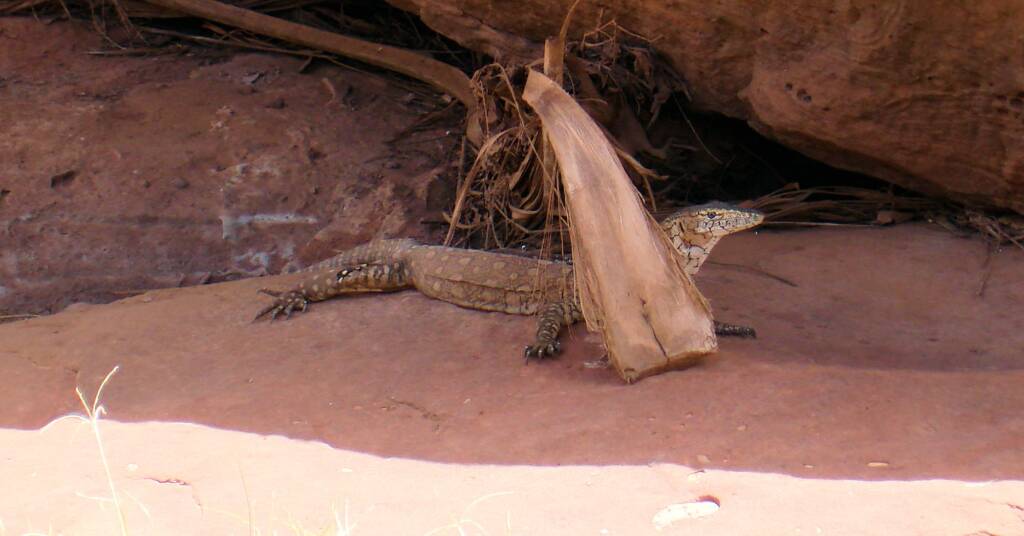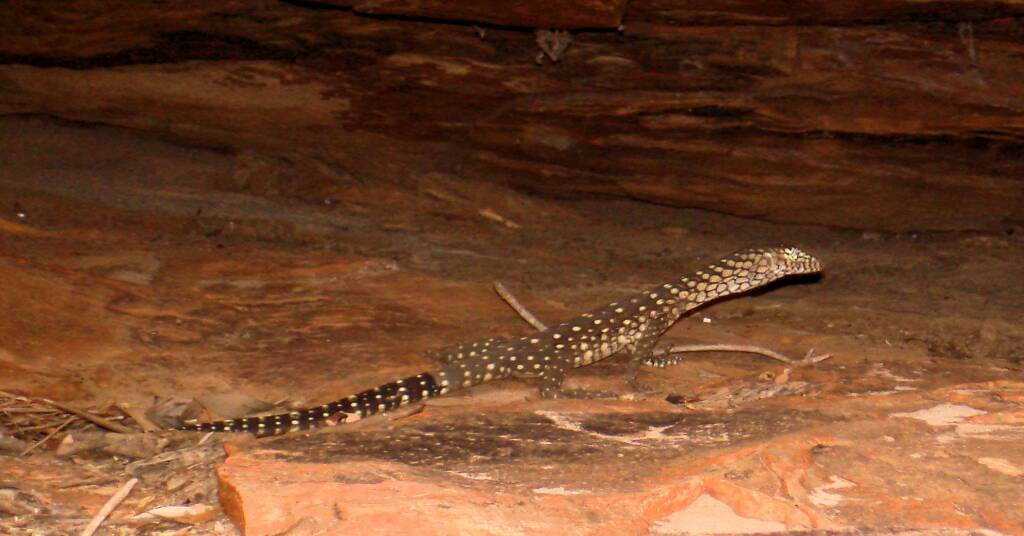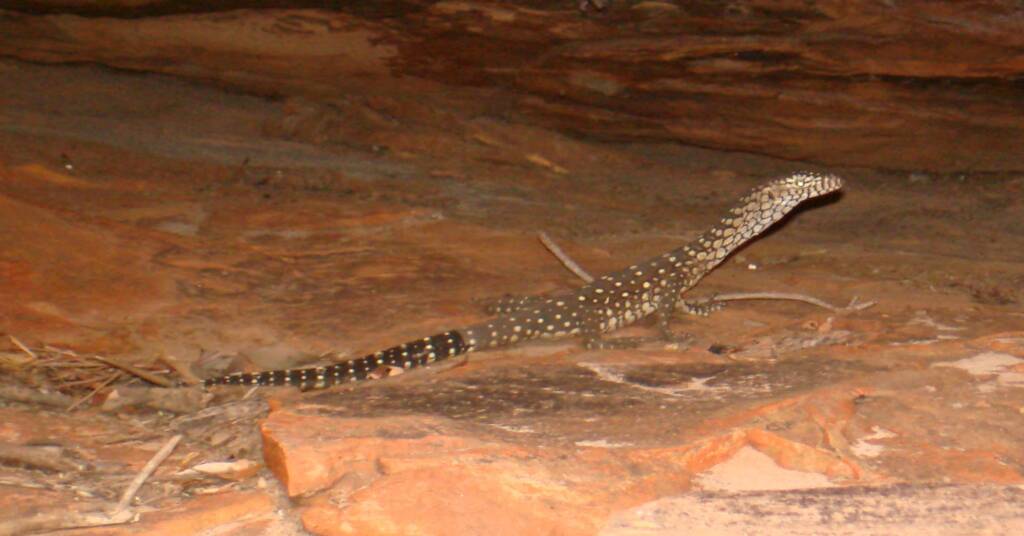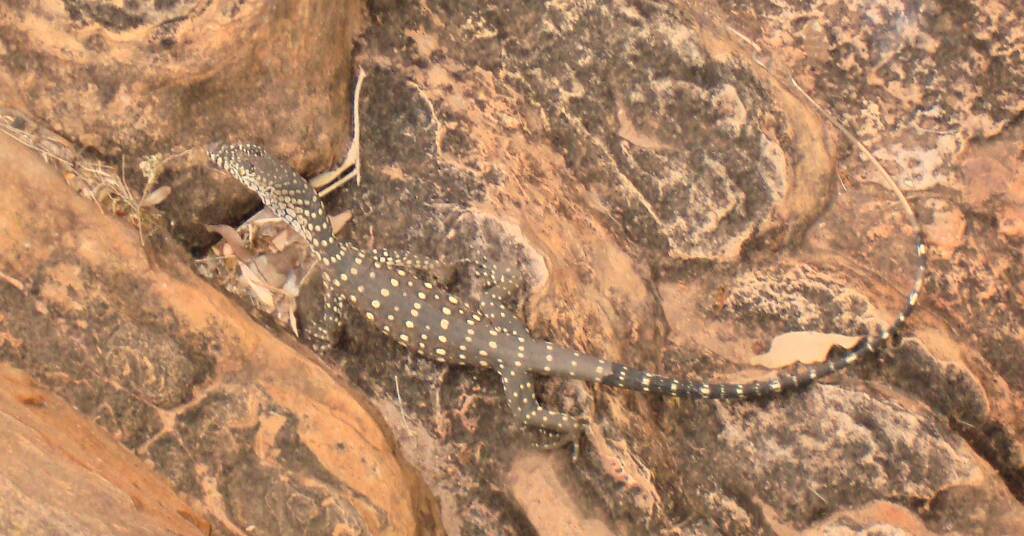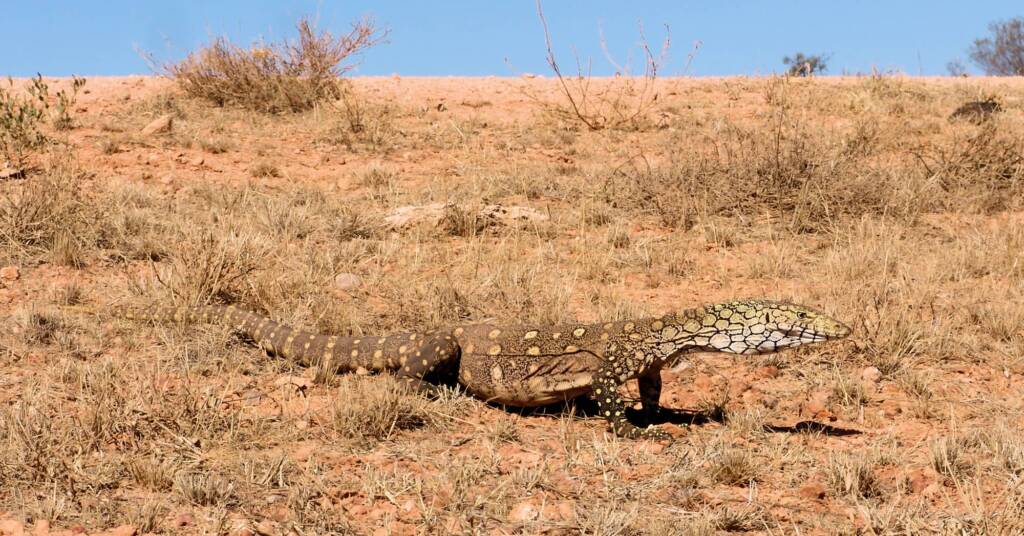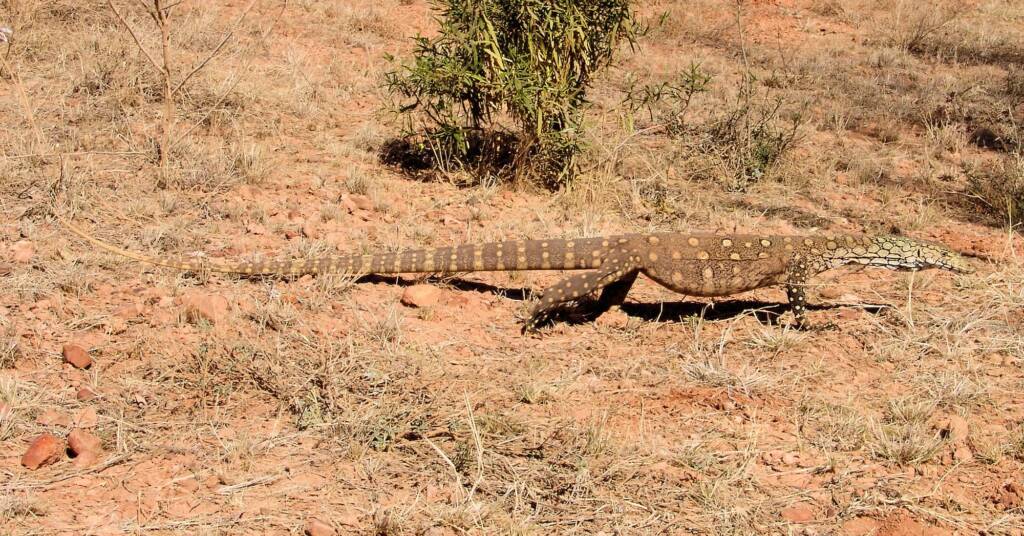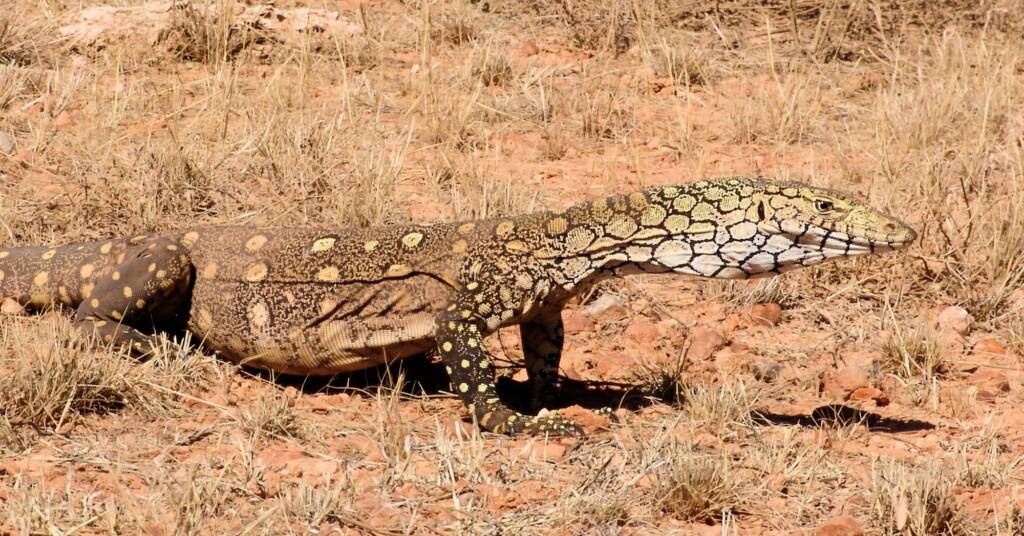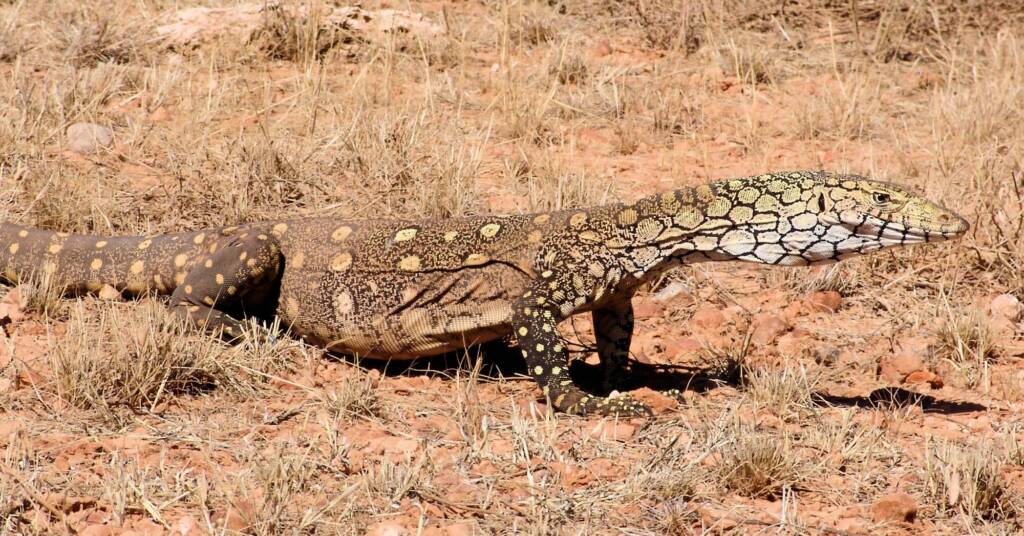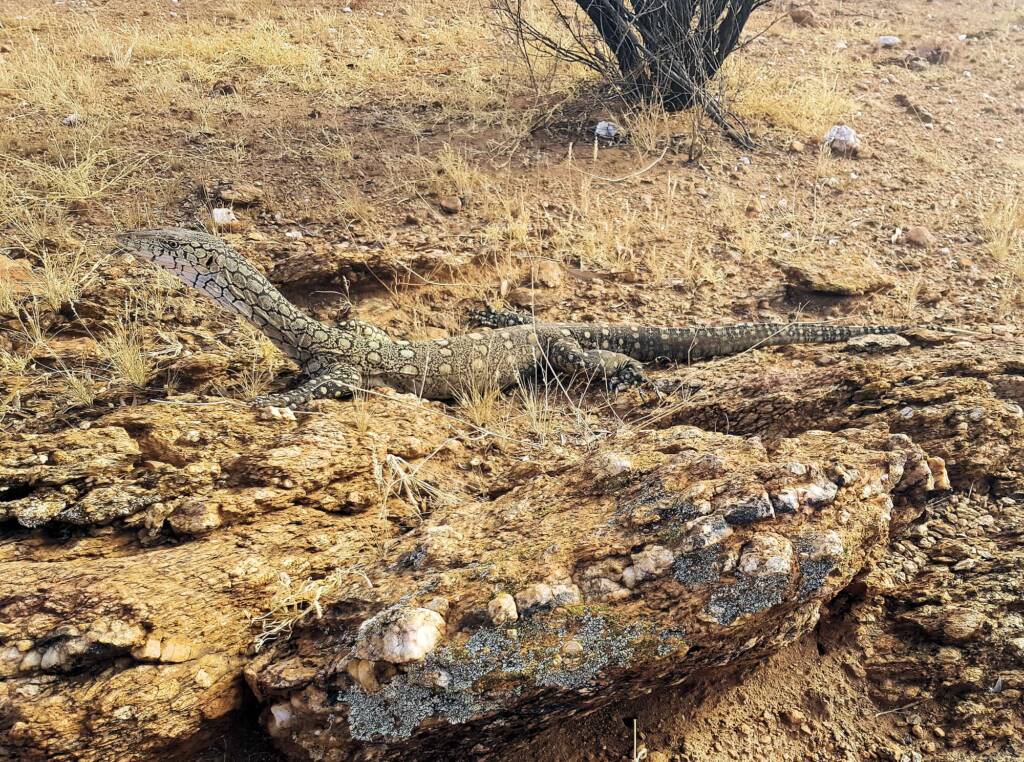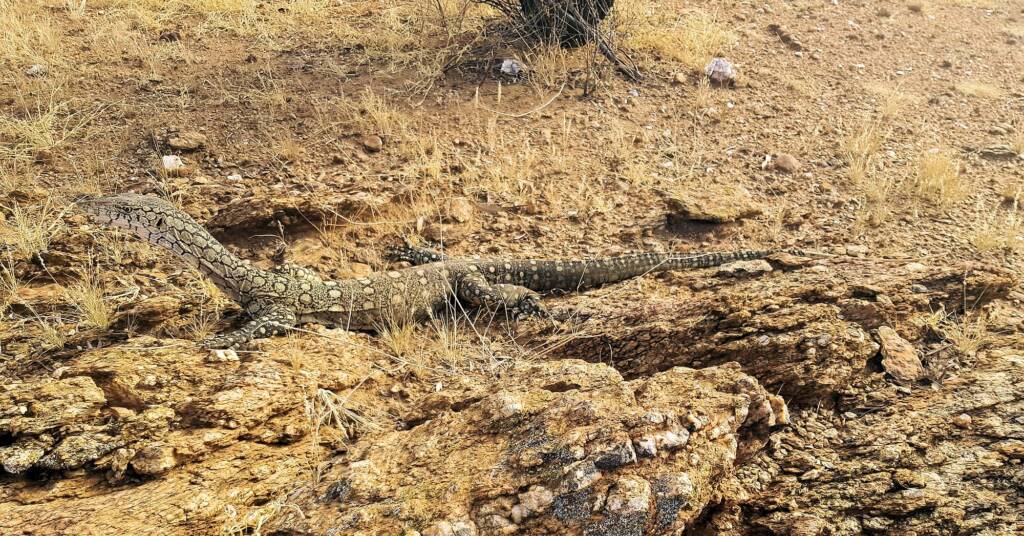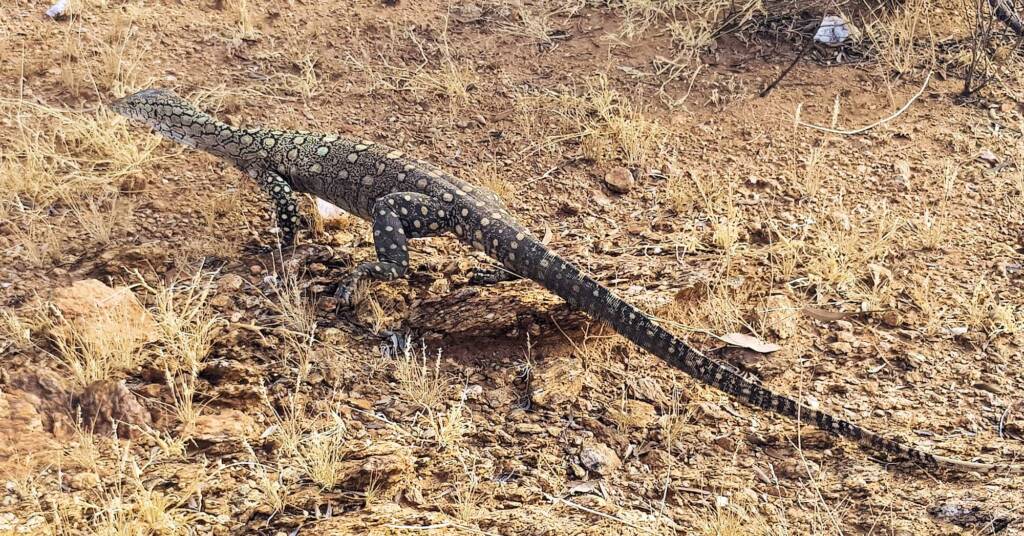Australia’s largest lizard species, the Perentie (Varanus giganteus) is found throughout the arid Central Australian region, central Western Australia and outback Queensland. Growing up to 2.5 metres in length, it is usually found in rocky ranges and outcrops, as well as the vast sandy deserts.
They belong to the monitor family Varanidae, also commonly referred to as goannas.
The perenties are distinctive with their long neck, angular brow, powerful limbs and long, laterally compressed tail. Each limb has five clawed toes and a mouth with sharp curved, backward pointing teeth. It can stand on its back legs and tail to get a better view of the surround, as well as being fast sprinters.

When threatened they rise up, inflating their throat and hissing. If the predator persists they run away, or use their strong tail in defence.
Diet
Perenties can pick up scents in the air and translate them using the Jacobson’s organ located on the roof of the mouth. They will eat almost anything that they can overpower including other reptiles, birds, mammals and carrion. They are known to forage on turtle eggs, insects the introduced rabbit and house mouse. Their teeth are thin, sharp and backward curving like snakes.
Their backward pointing teeth are designed for holding prey and not chewing. With each mouthful, they have a characteristic jerking motion as they throw the mouthful down the throat.
Habitat
Found living in the arid and semi-arid regions of Australia, the perentie usually prefer areas around rocky hills and outcrops, where they can take shelter. Perenties are known to dig burrows with their powerful front legs and claws or take over rabbit burrows. The burrows can be quite large, having several exits. Depending on their surrounding habitat, other perenties shelter in deep rock crevices.
Threats
Perenties are preyed on by wedge-tailed eagles and dingoes. Juveniles perenties are preyed on by snakes and large goannas, as well as larger perenties. They are also a source of food for indigenous Australians.
The perentie is strikingly different to the Gould’s Goanna, with a cream to white heavily speckled against a dark brown to black background. The pale coloured spots are arranged in rows across the body and tail.

In late 2005, University of Melbourne researchers discovered that perenties and goannas and other monitors are venomous.1
The perentie is an important bush food for the Aboriginal people. The perentie also features in Aboriginal mythology and dreamtime stories, as well as depicted in many pieces of Aboriginal art. See the Sand Goanna & Perentie and How the Goanna and Perentie got their colours.
Some lucky visitors were able to catch a glimpse of the free roaming wild perenties at the Alice Springs Desert Park.
Other photos and Perentie sightings are on the following pages:
- Alice Springs Reptile Centre (coming soon)
- Alice Springs Fauna – Perentie
- Alice Springs Desert Park – Perentie
- Goanna, Monitor, Perentie
- Watarrka National Park / Kings Canyon – Perentie
Often included in many artworks, check out our following pages:
- Atyunpe – Perentie (artist Dan Murphy)
- How the Goanna and Perentie got their colours (artist Trephina Sultan Thanguwa)
- Sand Goanna & Perentie (artist Selma Coulthard)
- Scientific classification
- Kingdom: Animalia
- Phylum: Chordata
- Subphylum: Vertebrata
- Class: Reptilia
- Order: Squamata
- Suborder: Sauria
- Family: Varanidae
- Genus: Varanus
- Subgenus: Varanus
- Species: Varanus giganteus
